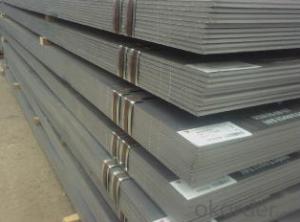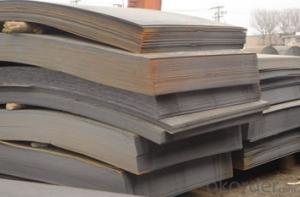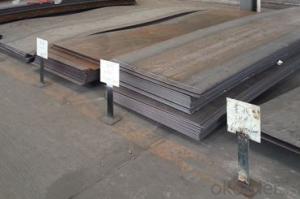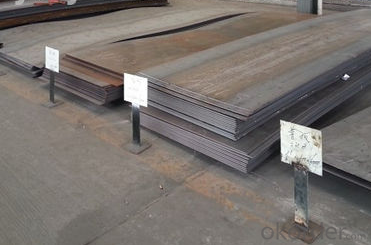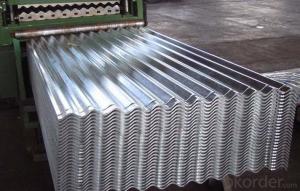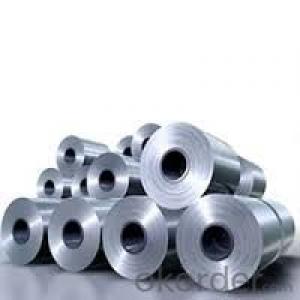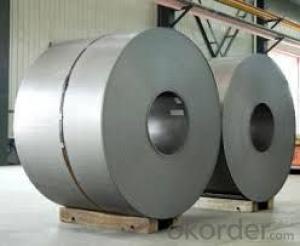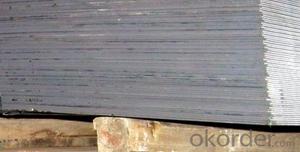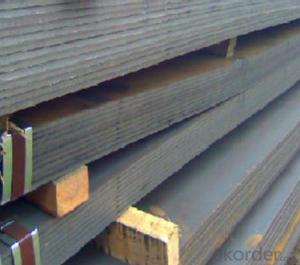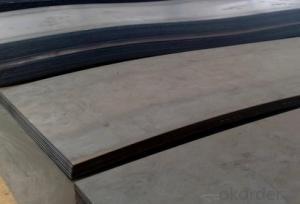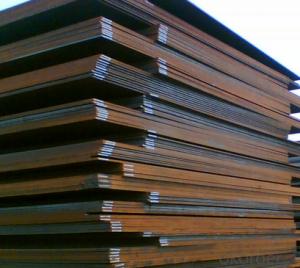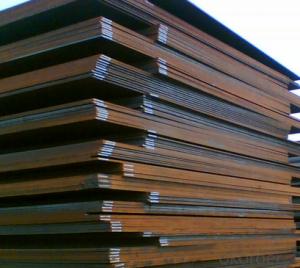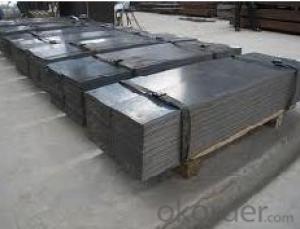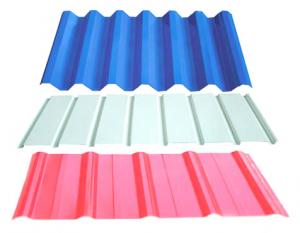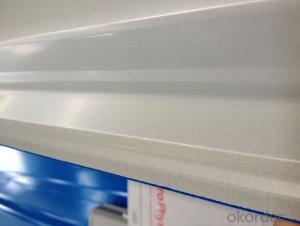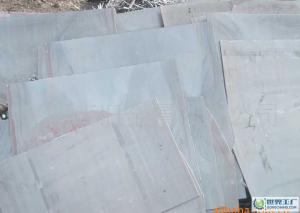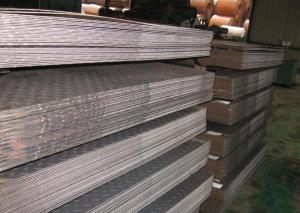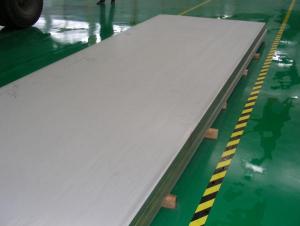Hot Rolled Carbon Steel Plate,Carbon Steel Sheet Q215, CNBM
- Loading Port:
- Qingdao
- Payment Terms:
- TT OR LC
- Min Order Qty:
- 10 pc
- Supply Capability:
- 30 pc/month
OKorder Service Pledge
OKorder Financial Service
You Might Also Like
Quick Details
| Standard: | AISI, ASTM, GB, JIS | Grade: | Q195,Q235,Q345,A36,C45 | Thickness: | 1.0-30MM |
| Model Number: | Q235,Q195,Q345 | ||||
| Type: | Steel Plate | Technique: | Hot Rolled | Surface Treatment: | Coated |
| Application: | Ship Plate | Special Use: | Silicon Steel | Width: | 30-2000mm |
| Length: | as your requirement | standard: | hot rolled | Surface: | Anti-rust oil |
Packaging & Delivery
| Packaging Details: | seaworthy packages or as customers' require |
| Delivery Detail: | within 15 days after the advance payment |
Hot rolled steel plate
1 carbon steel plate 3mm thick General information
| Product name | Type | Specification | Implementation of GB | ||
| thick | wide | long | |||
| Carbon structural steel | Q195,Q215, Q235A,Q235B, Q235C,Q255, Q275 | 4-120 | 1500-4500 | 6000-12000 | GB/T700-2006 |
| Low-alloy structural steel | Q295,Q345A, Q345B,Q2345C | 4-120 | 1500-4500 | 6000-12000 | BG/T1591-1994 |
| Quality carbon structural stee | 30-50 | 4-120 | 1500-4500 | 6000-12000 | BG/T699-1999 |
| Ship steel | CCSA,CCSB | 4-120 | 1500-4500 | 6000-12000 | materials and welding condition |
| CCSAH32,CCSAH36 CCSDH32,CCSDH36 | 4-120 | 1500-4500 | 6000-12000 | materials and welding condition or GB 712-2000 | |
| Boiler steel | 20g,22Mng, 16Mng,19Mng | 4-120 | 1500-4500 | 6000-12000 | GB 713-1997 |
| Pressure vessel steel | 1622Mng,20R, 15MnVR,15MnVNR | 4-120 | 1500-2700 | 6000-12000 | GB 6654-1996 |
| European standard plate
| S235JR,S235J0, S275JR,S275J0, S275JR2,S355JR, S355J0,S355J2 | 4-120 | 1500-4500 | 6000-12000 | EN 10025 |
| Japanese standard plate | SS400,SS400-B | 4-120 | 1500-4500 | 6000-12000 | JIS G3101-2004 |
2 carbon steel plate 3mm thick detail specification
Material:
A283Gr.D/A573Gr.65,A516Gr65,A516Gr70,A284Gr.D
SS400,SS300,CCSB A36,A32,LRA32,LRB,Q235
Q195,Q235,Q345,SS400,ASTM A36,E235B
Thickness: 4mm-120mm
width: 1500mm-4500mm
Length:2-10m ,accordingly
Thickness | 4-120mm |
Width | 1500-4500mm or as custom's request |
Length | 2-12m,as your requirment |
Technique | Cold rolled or hot rolled |
Surface treatment | Bare, galvanized coated or as customer's requirements. |
Standard | ASTM,EN,GB,JIS,GB |
Material | A283Gr.D/A573Gr.65,A516Gr65,A516Gr70,A284Gr.D SS400,SS300,CCSB A36,A32,LRA32,LRB,Q235 Q195,Q235,Q345,SS400,ASTM A36,E235B |
Terms of Payment | L/C or T/T |
Chemical composition | C≤0.004%;Si≤0.030%; Mn ≤0.17%;P≤0.012%; S≤0.010%; Fe balance |
Delivery Detail | within 30days once receive deposite or confirm L/C |
Packing | Standard export packing,or as requirement |
3 carbon steel plate 3mm thick application:
construction,machinery manufacturing, container manufacturing, shipbuilding, bridge construction. Can also be used to manufacture a variety of containers, the furnace shell, furnace plate, bridge and vehicle static steel plate, low alloy steel plate,shipbuilding plate, boiler plate, pressure vessel plate, pattern plate, tractor parts, automobile frame steel plate and welding components
- Q: Are the steel sheets heat-resistant?
- Indeed, steel sheets exhibit remarkable resistance to heat. Renowned for its elevated melting point, steel proves to be an apt substance for situations that entail exposure to extreme temperatures. It possesses the ability to endure heat without distorting or compromising its structural integrity. Nonetheless, the precise extent of this heat resistance may fluctuate contingent upon the distinct variety of steel and its composition. Certain steel alloys are intentionally formulated to possess an even greater resistance to heat, rendering them suitable for implementation in sectors like aerospace, automotive, and construction, where elevated temperature environments are prevalent.
- Q: Can steel sheets be perforated?
- Yes, steel sheets can be perforated. Perforating steel sheets involves creating a pattern of holes or perforations in the material, which can be achieved through various methods such as punching, drilling, or laser cutting. This process is commonly used in industries like construction, automotive, and manufacturing for applications such as ventilation, filtration, acoustic panels, or decorative purposes.
- Q: Can steel sheets be used for bridge construction or infrastructure projects?
- Yes, steel sheets can be used for bridge construction or infrastructure projects. Steel sheets offer high strength, durability, and flexibility, making them ideal for constructing bridges and other infrastructure projects. They can be easily fabricated and transformed into various shapes and sizes to meet the specific requirements of the project. Additionally, steel sheets have excellent load-bearing capacity, corrosion resistance, and can withstand harsh environmental conditions, making them a popular choice in the construction industry.
- Q: What are the different manufacturing processes for steel sheets?
- There are several manufacturing processes for steel sheets, including hot rolling, cold rolling, and electro-galvanizing. Hot rolling involves heating the steel above its recrystallization temperature and then passing it through rollers to achieve the desired thickness and shape. Cold rolling, on the other hand, involves passing the steel through rollers at room temperature to further refine its thickness and surface finish. Electro-galvanizing is a process where a layer of zinc is electroplated onto the steel sheet to provide corrosion resistance. Other processes such as pickling, annealing, and coating may also be involved in the manufacturing of steel sheets.
- Q: What is the process of applying weather-resistant coatings to steel sheets?
- The process of applying weather-resistant coatings to steel sheets typically involves several steps. First, the steel sheets are thoroughly cleaned and prepped to remove any dirt, rust, or previous coatings. This is usually done through a combination of mechanical cleaning, such as sandblasting or grinding, and chemical cleaning with solvents or acids. Once the surface is clean, a primer or base coat is applied to enhance adhesion and corrosion resistance. The primer is usually chosen based on the specific requirements of the application, such as the type of weather conditions the steel sheets will be exposed to. After the primer has dried or cured, the weather-resistant topcoat is applied. This topcoat is specially formulated to withstand harsh weather conditions, such as UV radiation, moisture, temperature fluctuations, and chemical exposure. The topcoat is typically sprayed onto the steel sheets using airless spray equipment to ensure an even and smooth application. Finally, the coated steel sheets are cured or baked at a specific temperature for a specified period of time. This curing process helps the coatings to fully bond and provides optimum performance. Overall, the process of applying weather-resistant coatings to steel sheets requires thorough cleaning, priming, topcoating, and curing to ensure optimal protection and durability in various weather conditions.
- Q: Can steel sheets be used for construction equipment?
- Yes, steel sheets can be used for construction equipment. Steel is a versatile and durable material that offers strength and stability, making it suitable for various construction equipment such as excavators, cranes, bulldozers, and scaffolding. Steel sheets can be formed, welded, and shaped into different components and structures, ensuring the reliability and robustness required in construction applications.
- Q: What are the different methods of protecting steel sheets from scratches?
- There are several methods of protecting steel sheets from scratches. One commonly used method is applying a protective coating or paint on the surface of the steel sheets. This coating acts as a barrier against scratches and helps to prevent damage. Another method is using adhesive film or tape to cover the steel sheets, which provides a temporary protective layer. Additionally, using soft materials or protective packaging during transportation and handling can help minimize the risk of scratches.
- Q: Can steel sheets be used for automotive exhaust systems?
- Yes, steel sheets can be used for automotive exhaust systems. Steel is a common material for exhaust systems due to its durability, resistance to heat and corrosion, and cost-effectiveness. Steel sheets are often formed into pipes, mufflers, and other components of the exhaust system to efficiently channel and expel exhaust gases.
- Q: What are the functions and classifications of galvanized sheet?
- Galvanized sheet prices of different types is not the same, of course, different industries in the field of galvanized plate and material prices are not the same, so you choose in the galvanized plate, must be supplied to the use of your sales, so that they will come to you through your use of choosing suitable for you product.
- Q: Can steel sheets be used for automotive manufacturing?
- Yes, steel sheets can be used for automotive manufacturing. Steel is a widely used material in the automotive industry due to its strength, durability, and cost-effectiveness. Steel sheets are commonly used in various automotive components such as body panels, chassis, frames, and structural reinforcements. They provide the necessary strength and rigidity required for the safety and performance of vehicles. Moreover, steel sheets can be easily formed and molded into different shapes, making them suitable for complex automotive designs. Additionally, steel is readily available, making it a popular choice for automotive manufacturers.
Send your message to us
Hot Rolled Carbon Steel Plate,Carbon Steel Sheet Q215, CNBM
- Loading Port:
- Qingdao
- Payment Terms:
- TT OR LC
- Min Order Qty:
- 10 pc
- Supply Capability:
- 30 pc/month
OKorder Service Pledge
OKorder Financial Service
Similar products
Hot products
Hot Searches
Related keywords
